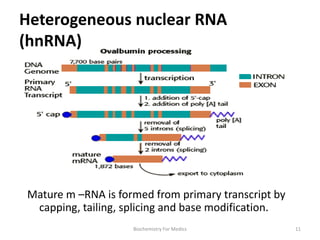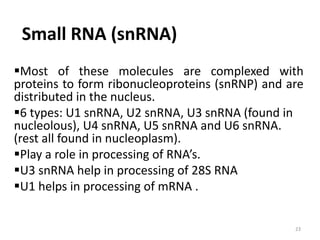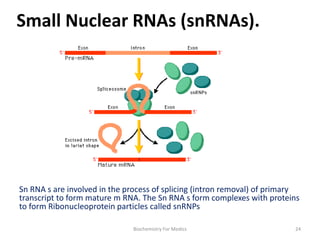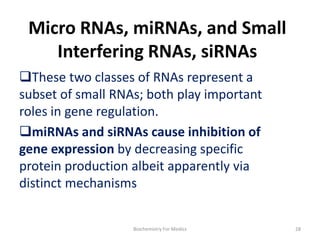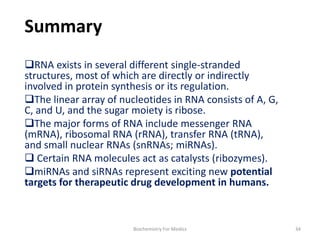This document discusses various types of RNA. There are three main classes of RNA - messenger RNA (mRNA), transfer RNA (tRNA), and ribosomal RNA (rRNA). mRNA carries coding information from DNA to the ribosome for protein synthesis. tRNA transfers amino acids to the ribosome during protein synthesis. rRNA is a core component of ribosomes and plays a key role in protein synthesis. The document also describes other RNA types including microRNAs, small nuclear RNAs, and heterogeneous nuclear RNA involved in processing mRNA.










